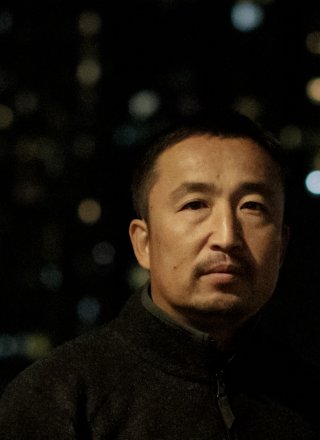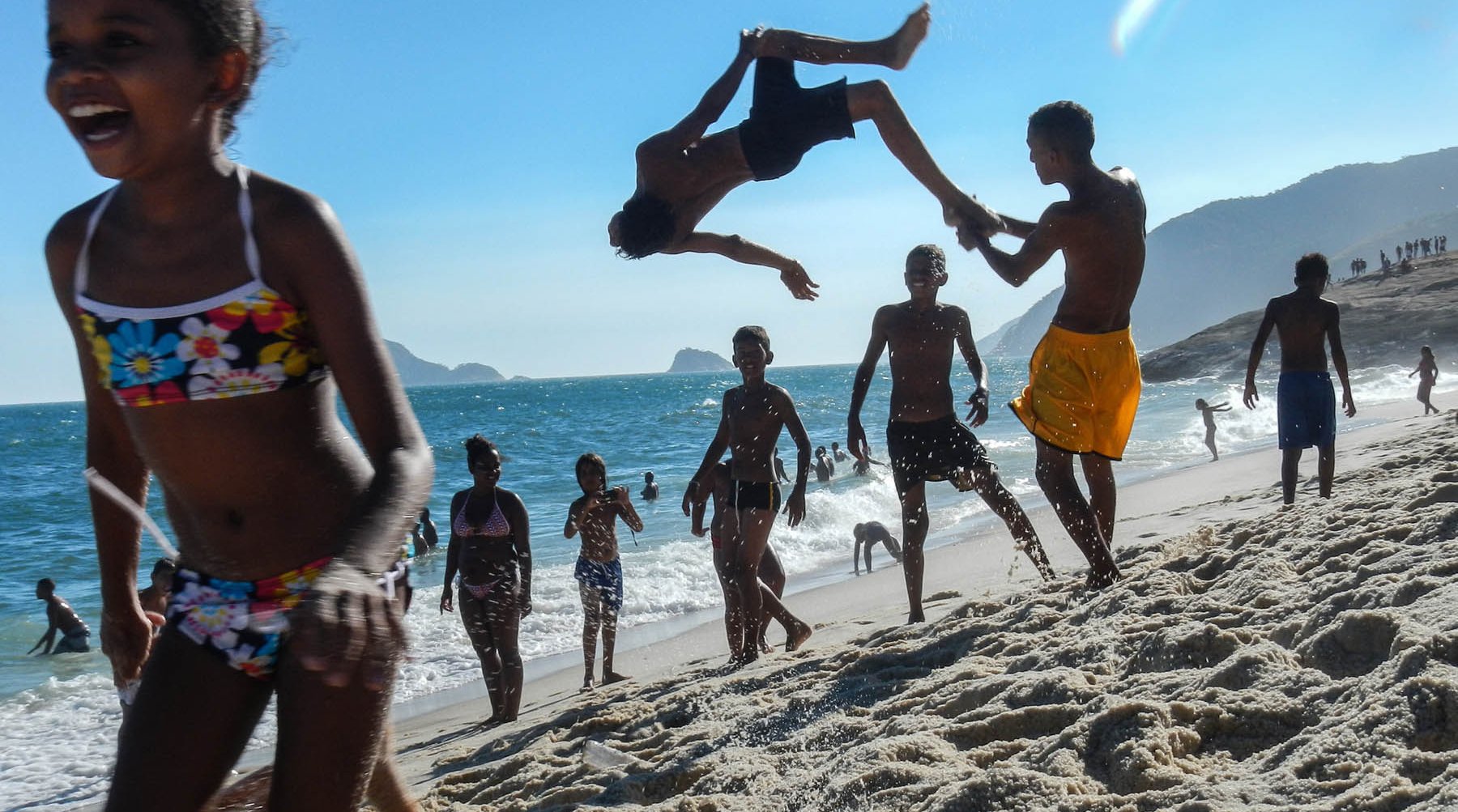
Football as seen through the eyes of children in Cidade de Deus favela
Christophe Simon, Yasuyoshi Chiba
AFP
In Brazil, kids in favelas play football all the time and anywhere they can, kicking battered old footballs around vacant lots or up against walls. Before the 2014 World Cup, Christophe Simon set out to find a way of showing the story of the Brazilian love of football. And what better way could there be than to ask children from the favelas to depict their love for the sport as they see it?
Christophe Simon settled in Rio in 2011, and reported on many “pacification” operations in the favelas conducted by the security forces as part of efforts to improve the image of the city in the lead-up to the Football World Cup and the 2016 Olympic Games. He would be seen on the streets with his cameras, following soldiers and police through back alleys; and every time he was surrounded by a cluster of kids fascinated by what he was doing. They followed him everywhere, asking endless questions.
In 2011, Christophe turned 50, an age when he wanted to share and pass on some of his skills to the younger generation. He contacted Tony Barros, a local photographer running Lente dos Sonhos photography school in Rio, and they put together a group of eighteen children, between 10 and 15 years old.
Preview
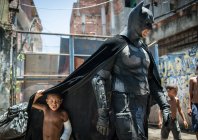
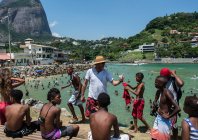

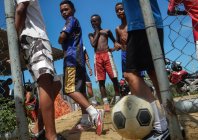
From February to May 2013, the two photographers went out nearly every weekend with groups of three to ten children. Each one had a camera and a job to do, and that was to produce pictures related to the subject of football. Working sessions usually ran for three or four hours, but sometimes lasted all day. Christophe taught them the basics of the job, and set a number of rules, such as no posed pictures (quite a challenge in a country where people love to pose) and no flash photography. The project was an immediate hit, and the children were totally involved, with some of them showing genuine promise.
The Cidade de Deus (City of God) favela had recently been “pacified,” but it was still a tricky area where anything might happen, for example, drug dealers coming face to face with children wielding cameras, a challenging situation that was successfully defused by Tony Barros using all his diplomatic skills.
Christophe Simon has been reporting for AFP for thirty years. He has covered conflicts and historic events in Arab countries, Africa, the Balkans and Eastern Europe. He joined AFP in 1984, starting in France at the office in Nice, and in 1989 went to the Strasbourg office. During the First Gulf War, in 1991, he was one of the first photographers to enter Kuwait City after it had been liberated by U.S. troops. In 1994 he was appointed chief photographer for West and Central Africa, based in Abidjan, then, after a short period back in France at the Montpellier office, went to Madrid in 1999 as chief photographer for Spain and Portugal, establishing a sound network of photographers there.
In 2005, Christophe Simon came to AFP head office in Paris, where he was head of reporting for the chief photo editor. In 2007, he went to Italy as chief photographer, reporting on events that included the earthquake in the city of L’Aquila. In 2011, he was appointed to the position of chief photographer in Brazil.





